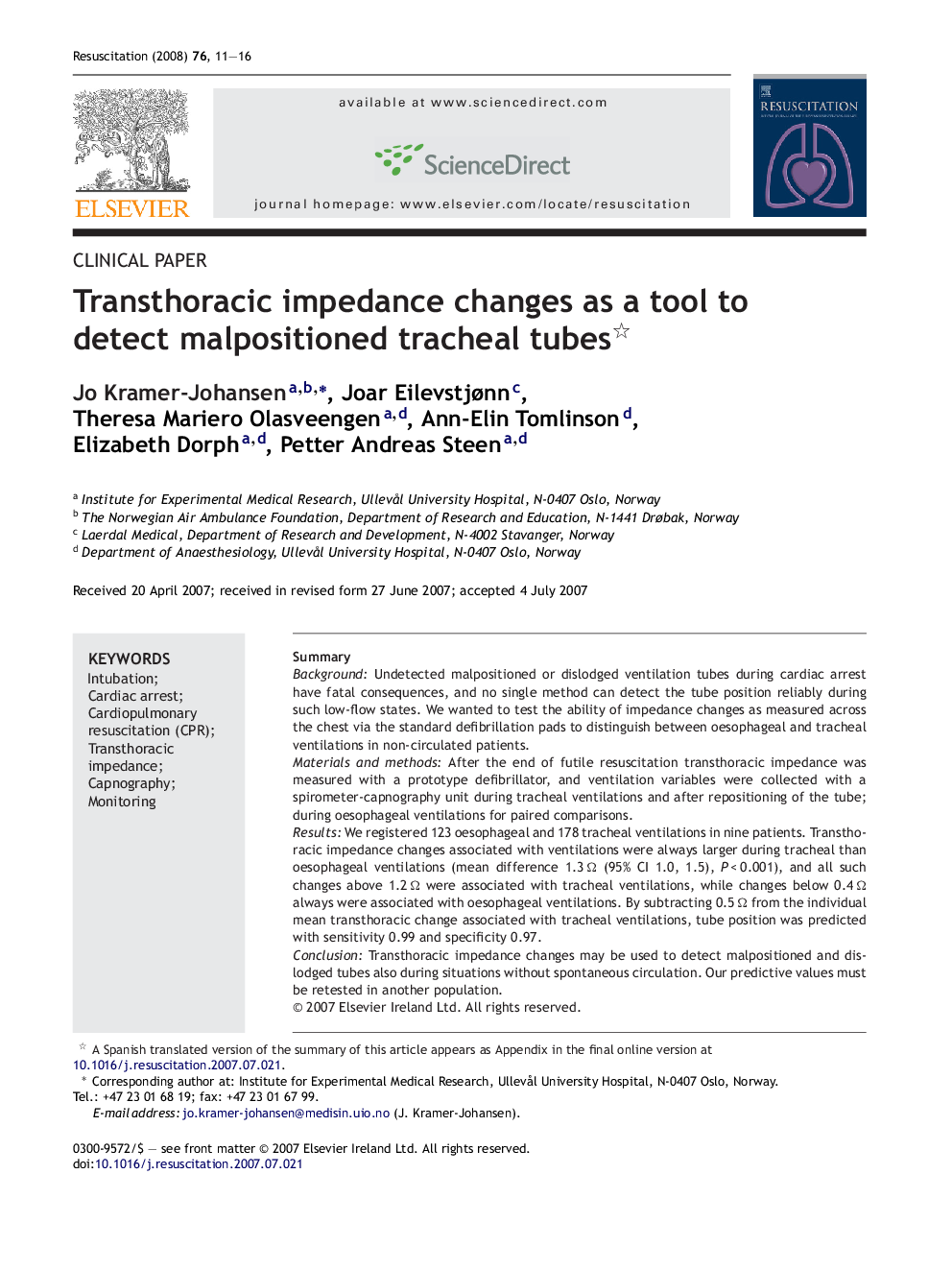| Article ID | Journal | Published Year | Pages | File Type |
|---|---|---|---|---|
| 3009843 | Resuscitation | 2008 | 6 Pages |
SummaryBackgroundUndetected malpositioned or dislodged ventilation tubes during cardiac arrest have fatal consequences, and no single method can detect the tube position reliably during such low-flow states. We wanted to test the ability of impedance changes as measured across the chest via the standard defibrillation pads to distinguish between oesophageal and tracheal ventilations in non-circulated patients.Materials and methodsAfter the end of futile resuscitation transthoracic impedance was measured with a prototype defibrillator, and ventilation variables were collected with a spirometer-capnography unit during tracheal ventilations and after repositioning of the tube; during oesophageal ventilations for paired comparisons.ResultsWe registered 123 oesophageal and 178 tracheal ventilations in nine patients. Transthoracic impedance changes associated with ventilations were always larger during tracheal than oesophageal ventilations (mean difference 1.3 Ω (95% CI 1.0, 1.5), P < 0.001), and all such changes above 1.2 Ω were associated with tracheal ventilations, while changes below 0.4 Ω always were associated with oesophageal ventilations. By subtracting 0.5 Ω from the individual mean transthoracic change associated with tracheal ventilations, tube position was predicted with sensitivity 0.99 and specificity 0.97.ConclusionTransthoracic impedance changes may be used to detect malpositioned and dislodged tubes also during situations without spontaneous circulation. Our predictive values must be retested in another population.
